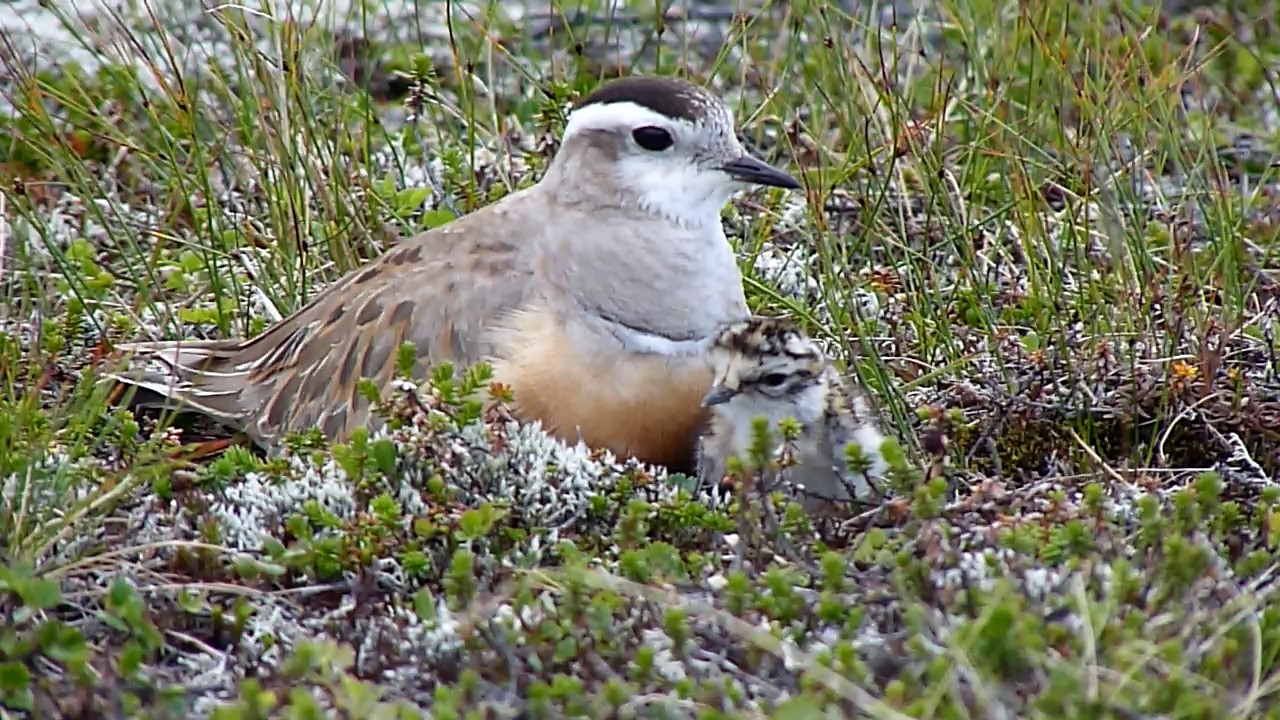Eurasian Dotterel
A species of Typical plovers Scientific name : Charadrius morinellus Genus : Typical plovers
Eurasian Dotterel, A species of Typical plovers
Botanical name: Charadrius morinellus
Genus: Typical plovers
Content
Description General Info
 Photo By Lutz Lücker , used under CC-BY-SA-3.0 /Cropped and compressed from original
Photo By Lutz Lücker , used under CC-BY-SA-3.0 /Cropped and compressed from original Description
This plover is smaller and more compact than European golden plover (Pluvialis apricaria). It has a striking whitish supercilium in all plumages and has plain wings in flight. Adults in summer are unmistakable, with a chestnut breast bordered above with white, black belly and warm brown back. The legs are yellow, and the short bill is black. As with the phalaropes, the female is brighter than the male. Winter birds lack the rich underpart colouration, apart from the white breast line, and are greyer above. Young birds are similar but have a scaly appearance to their backs. 
Size
20-23 cm (8-9 in)
Colors
Brown
Black
Red
Gray
White
Orange
Life Expectancy
12 years
Nest Placement
Ground
Feeding Habits
Eurasian Dotterel primarily consumes insects, snails, worms, and shellfish, foraging with unique precision. These birds showcase distinctive dietary behaviors, preferring to feed during specific times that optimize their hunting success.
Habitat
Eurasian Dotterel primarily inhabits open, elevated landscapes such as Arctic tundras and mountainous regions, with preferences for areas with minimal vegetation like moss, short grass, lichens, and exposed rocks. During the breeding season, it occupies areas up to 2720 meters in elevation like the Pyrenees. Eurasian Dotterel's migratory routes include heathlands and agricultural lands with short vegetation, showing fidelity to traditional stopovers. In the non-breeding season, eurasian Dotterel frequents semi-desert, stony steppes, and marginal agricultural zones, adapting to elevations up to 1600 meters in North Africa.
Dite type
Insectivorous
General Info
Feeding Habits
Bird food type
Behavior
The dotterel's diet is made up of insects and other small invertebrates such as snails and worms and shellfish. These are obtained by a run-and-pause technique, rather than the steady probing used by other waders. The flight call is a soft pyurr. The female's song is a simple repetitive whistle. The male dotterel generally is responsible for incubation and looks after the chicks. In most cases the cock dotterel successfully prevents other males from getting his mate and fertilizing her eggs. He usually rears chicks that he has fathered and only 4.6% (2/44) of chicks were not the genetic offspring of the caring male, corresponding to 9.1% (2/22) broods affected. 
Distribution Area
It breeds in the Arctic tundra of northern Eurosiberia, from Norway to eastern Siberia, and on suitable mountain plateaus such as the Scottish highlands and the Alps. This species is migratory, wintering in a narrow belt across north Africa from Morocco eastwards to Iran. Migration stopovers are traditional, and small parties (trips) of dotterels pass through each year at these usually inland arable or grassy sites. The winter habitat is semi-desert. 
Species Status
It is a relatively common species with a wide range. Populations seem to be declining slowly but not alarmingly so, and the International Union for Conservation of Nature has rated it as a "least-concern species". A survey published in 2015 showed a fall in dotterel numbers in Scotland between 1987 and 2011, from 980 to 423 breeding males - representing a decline of 57%. The Eurasian dotterel is one of the species to which the Agreement on the Conservation of African-Eurasian Migratory Waterbirds (AEWA) applies. 
Scientific Classification
Phylum
Chordates Class
Birds Order
Shorebirds Family
Plovers Genus
Typical plovers Species
Eurasian Dotterel